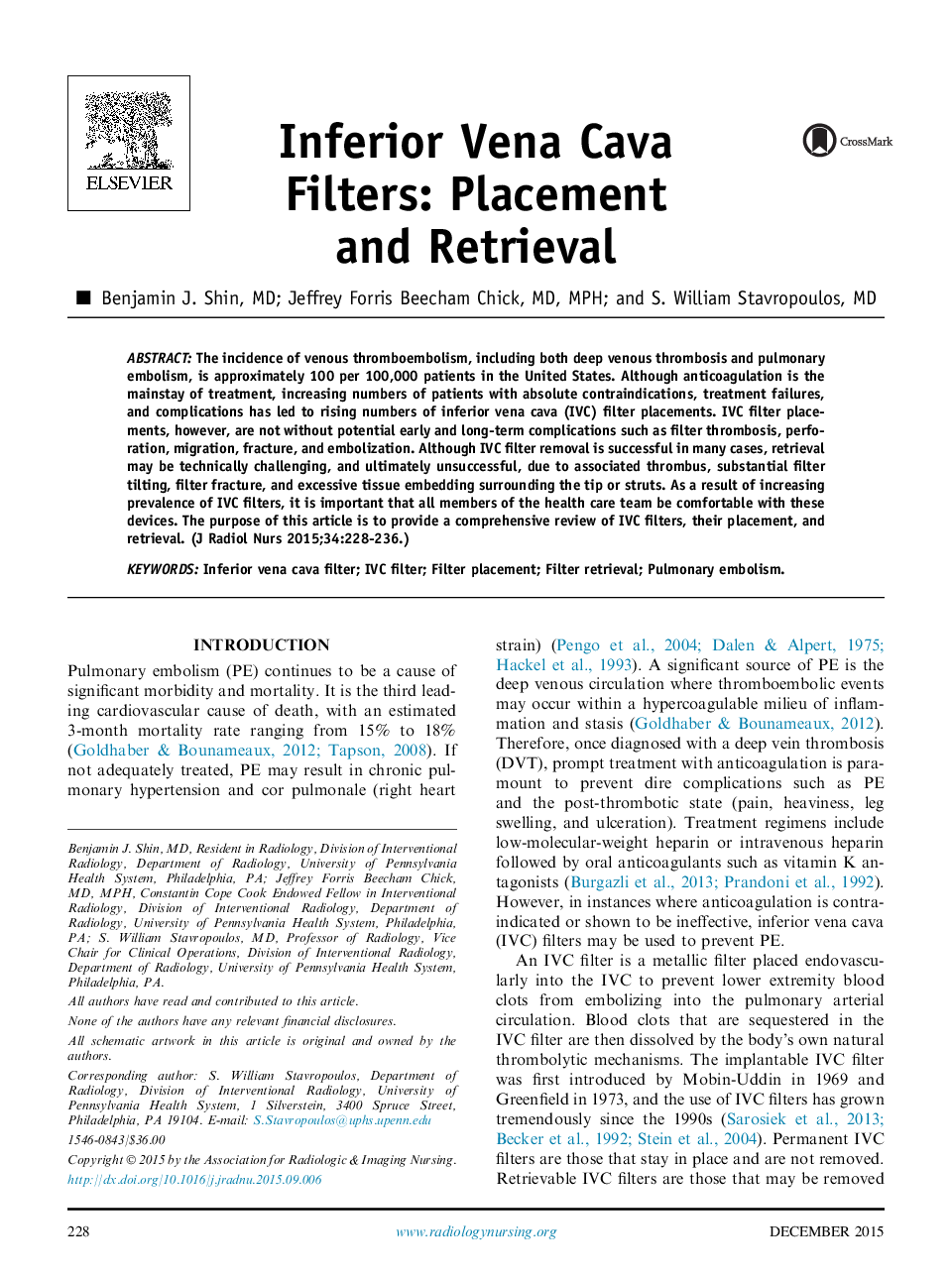| Article ID | Journal | Published Year | Pages | File Type |
|---|---|---|---|---|
| 2670854 | Journal of Radiology Nursing | 2015 | 9 Pages |
Abstract
The incidence of venous thromboembolism, including both deep venous thrombosis and pulmonary embolism, is approximately 100 per 100,000 patients in the United States. Although anticoagulation is the mainstay of treatment, increasing numbers of patients with absolute contraindications, treatment failures, and complications has led to rising numbers of inferior vena cava (IVC) filter placements. IVC filter placements, however, are not without potential early and long-term complications such as filter thrombosis, perforation, migration, fracture, and embolization. Although IVC filter removal is successful in many cases, retrieval may be technically challenging, and ultimately unsuccessful, due to associated thrombus, substantial filter tilting, filter fracture, and excessive tissue embedding surrounding the tip or struts. As a result of increasing prevalence of IVC filters, it is important that all members of the health care team be comfortable with these devices. The purpose of this article is to provide a comprehensive review of IVC filters, their placement, and retrieval.
Related Topics
Health Sciences
Nursing and Health Professions
Nursing
Authors
Benjamin J. MD, Jeffrey Forris Beecham MD, MPH, S. William MD,
